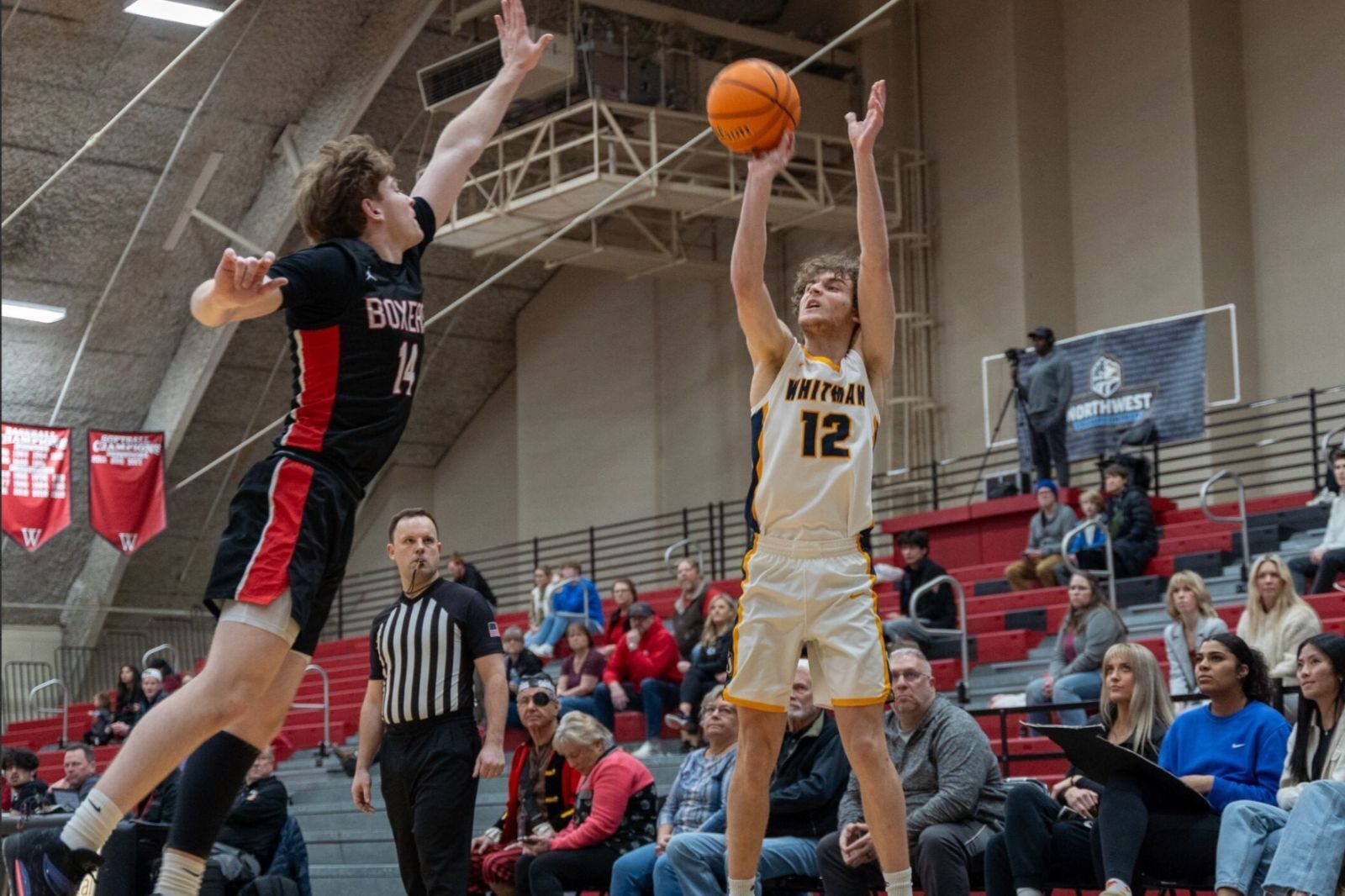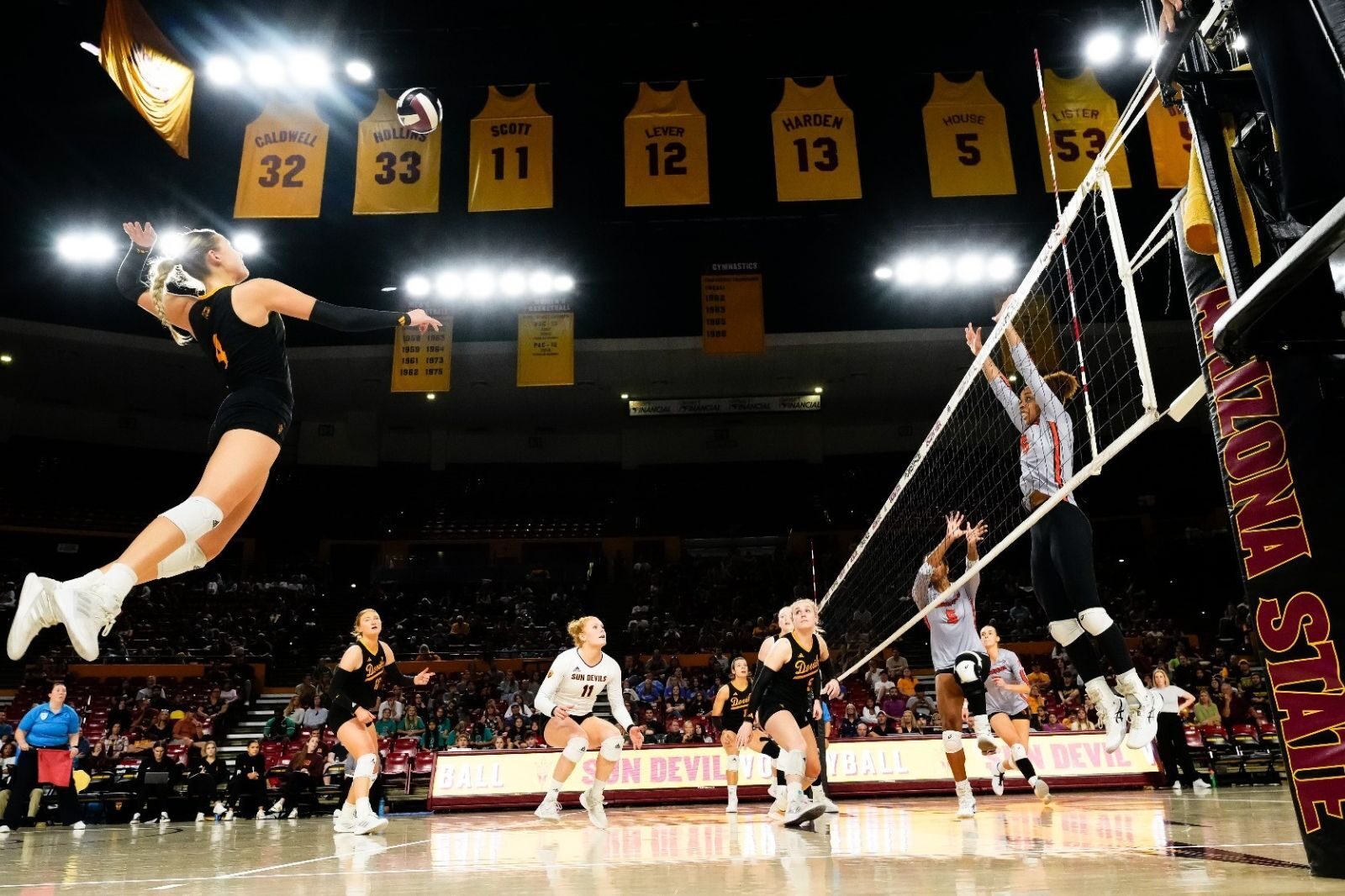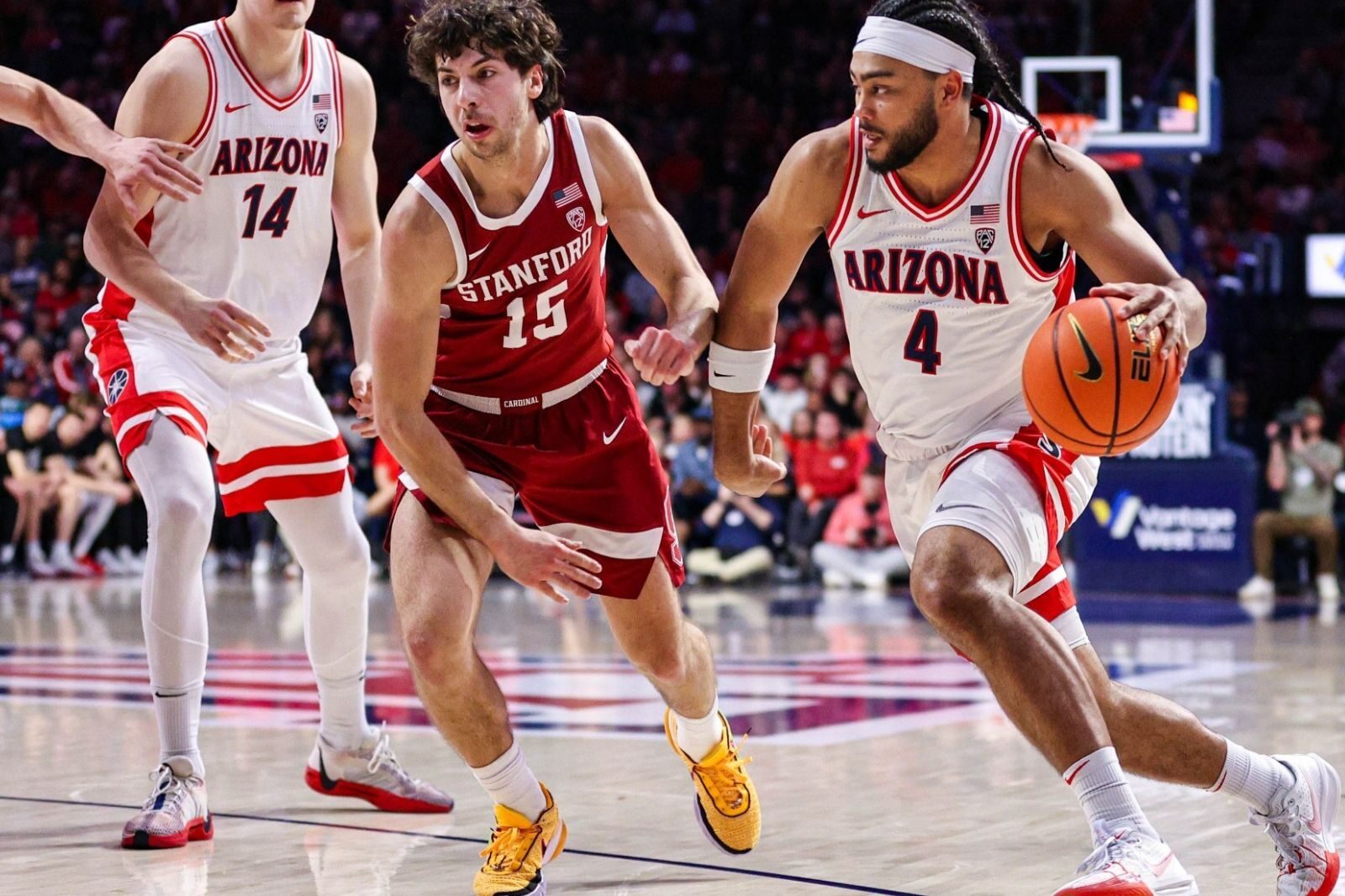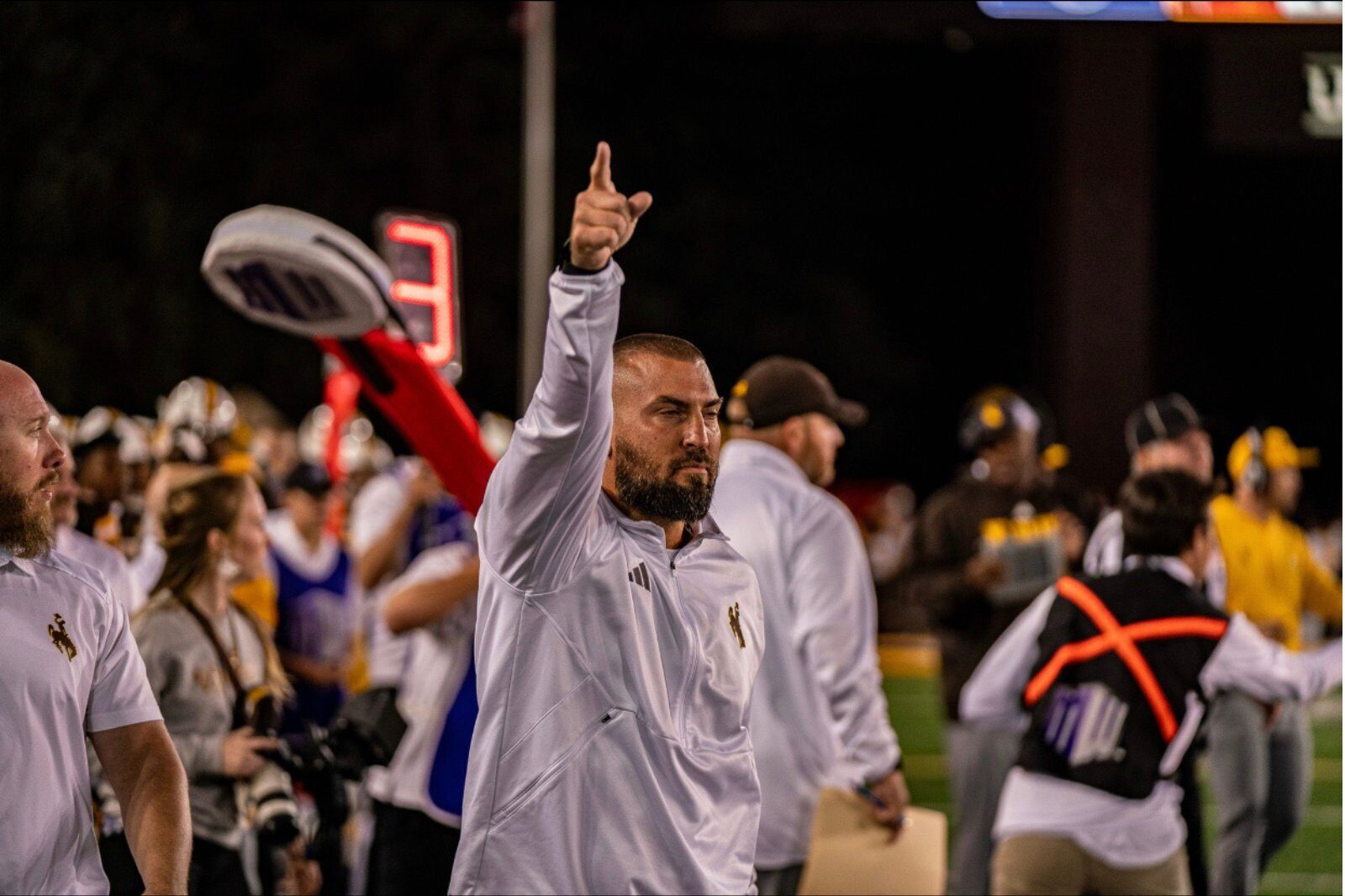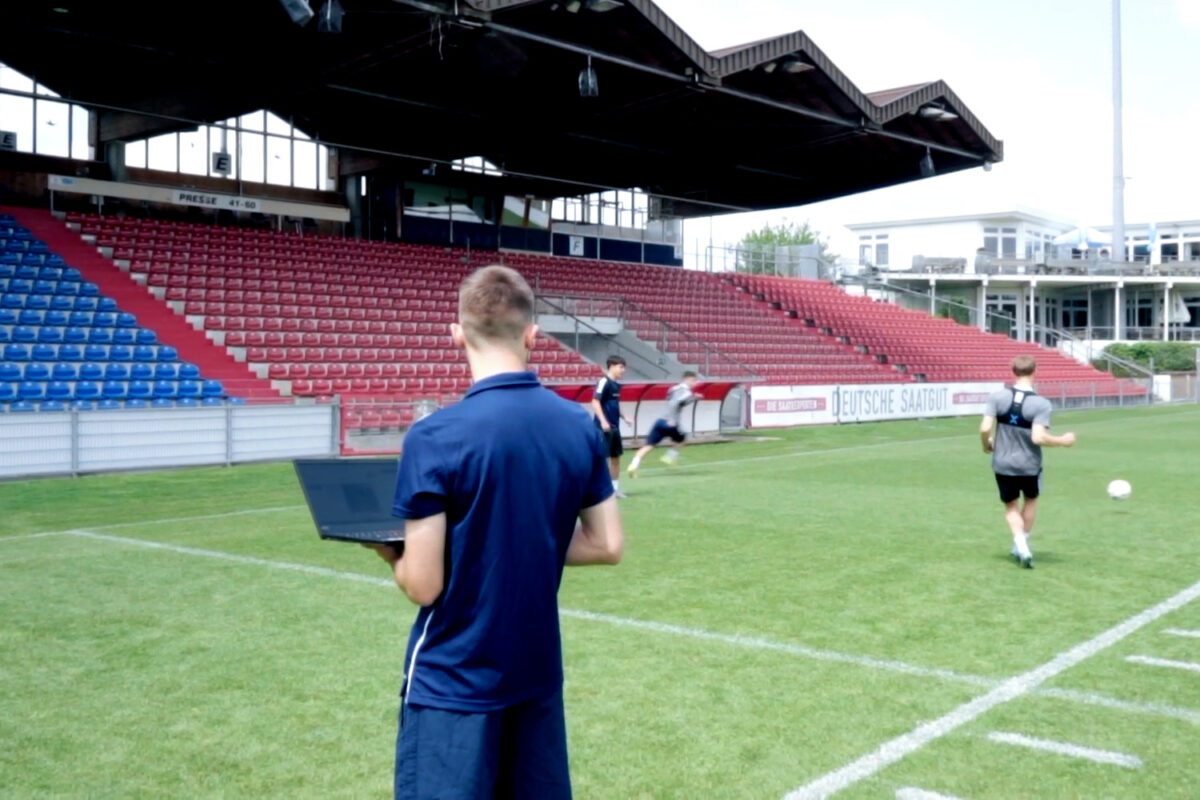How Football Players Improve Max Speed with Sports Performance Training
Football is a game of inches and can be the difference between victory and defeat; coaches and athletes are constantly seeking innovative ways to gain an edge. One of the most crucial aspects of the game is speed — the ability to cover ground quickly, change direction on a dime, and execute plays with precision. This is where the combination of sports performance coaches and cutting-edge technology come into play.
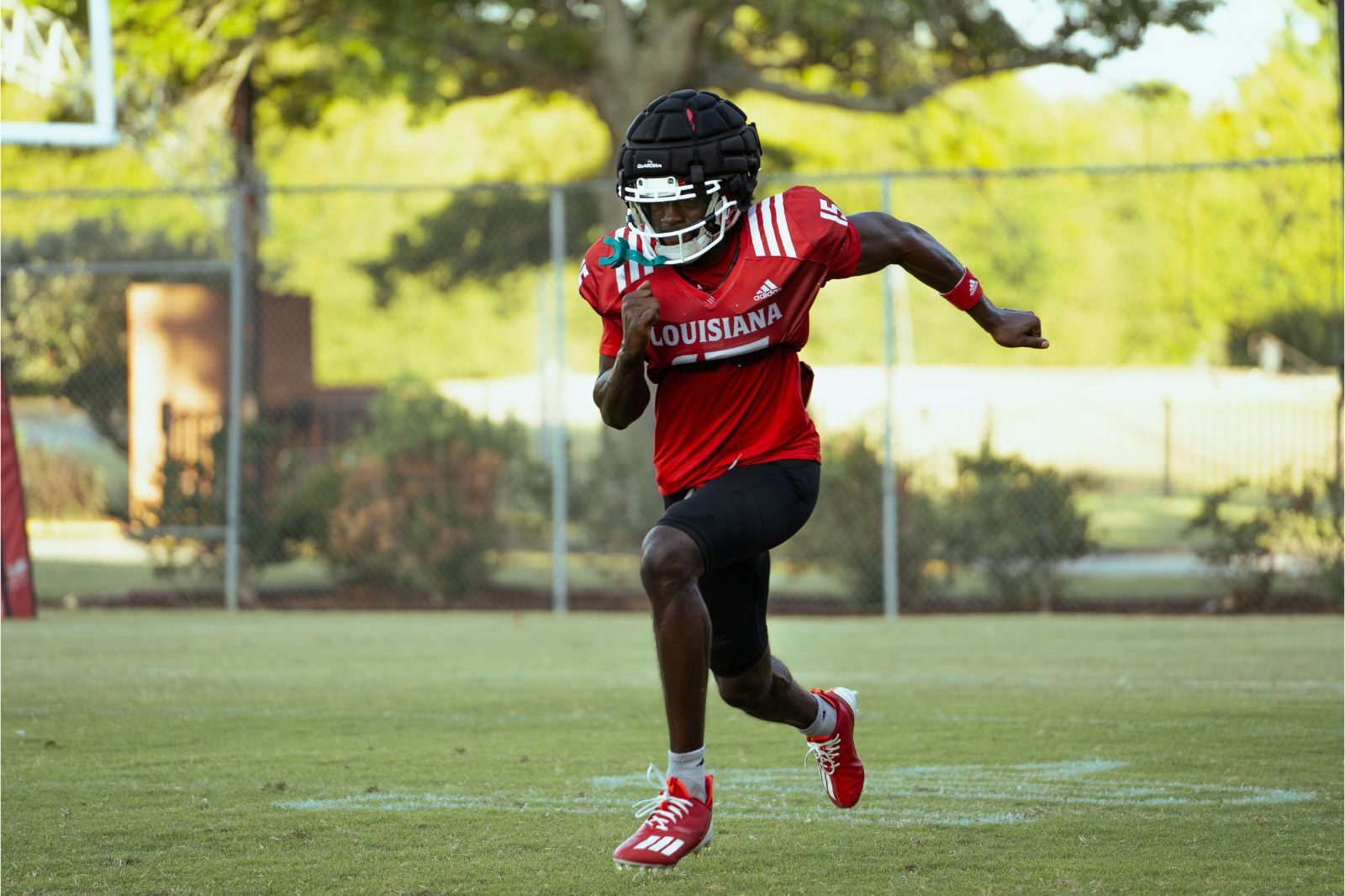
Sports performance coaches are the unsung heroes behind the scenes of every successful sports team. They work closely with athletes to optimize many aspects, including:
- Physical capabilities
- Mental resilience
- Overall performance
Understanding how performance coaches collaborate with athletes and utilize performance tracking technology to measure and improve an athlete’s max speed can be simplified by establishing benchmarks and optimizing practice sessions leading up to game day.
The ability to track and monitor performance for each individual athlete by position or the entire team helps coaches focus on the demands of the game without a one-size-fits-all approach to training and conditioning.
The University of Louisiana used sports performance tracking technology to improve their conference and overall records, and earn a berth in the 2023 Independence Bowl. They’re looking to build on their success even more this season.
We sat down with their Director of Athletic Performance to find out how the team is using the data to make better coaching decisions. You can download the interview below.
Max Speed: The Holy Grail of Explosiveness
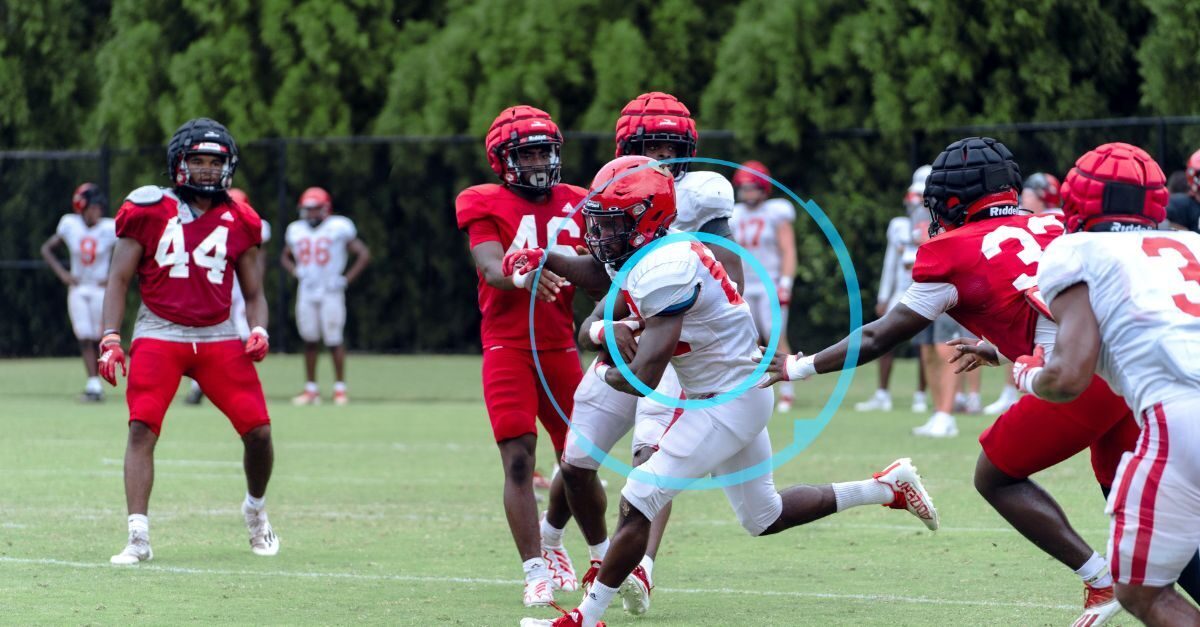
Max speed, often referred to as top-end speed, is the maximum velocity an athlete can achieve while sprinting. In fact, it seems like NFL players get faster every year, either at the combine, or checking the numbers during a game.
It’s a critical attribute in football, as it determines how fast a player can cover the field during offensive and defensive plays. Sports performance coaches collaborate with athletes to not only enhance their max speed but also sustain it throughout the game.
Sports Performance Tracking Technology
Modern sports performance tracking technology is revolutionizing the way coaches and athletes approach training. Cutting-edge wearable devices like PERFORM GPS Pro provide real-time data on an athlete’s movements, including speed, acceleration, deceleration, and changes in direction. This wealth of data allows coaches to delve deep into an athlete’s performance, identifying strengths, weaknesses, and areas for improvement.

The KINEXON GPS Pro system allows coaches to use player relative max speeds to keep player performance on track throughout a grueling football season. These numbers can easily be adjusted and monitored to keep all players available on the field. Using max speeds also gives all players a tangible metric to encourage constant competition among teammates to push one another.
Setting Max Speed Benchmarks for Practice
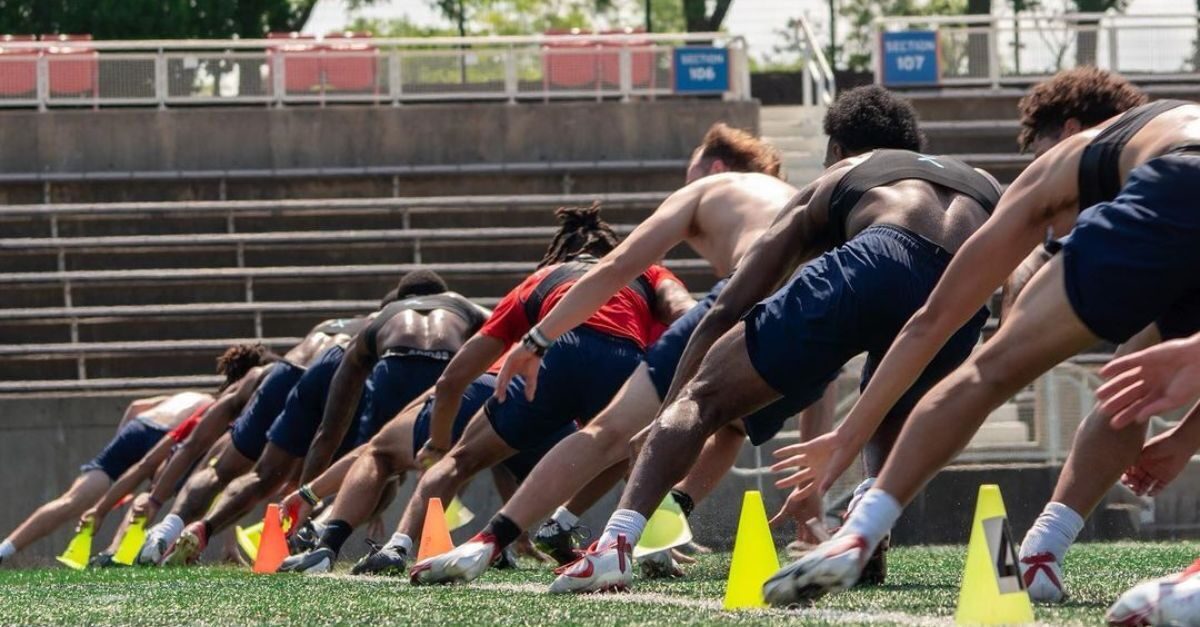
Establishing max speed benchmarks is a fundamental strategy performance coaches employ to gauge an athlete’s progress. By recording baseline max speeds and gradually increasing intensity and effort during training, athletes can consistently surpass their previous limits. This approach builds confidence and fosters a sense of accomplishment that drives players to push their boundaries continuously.
Tracking Max Speed with Speed Zones
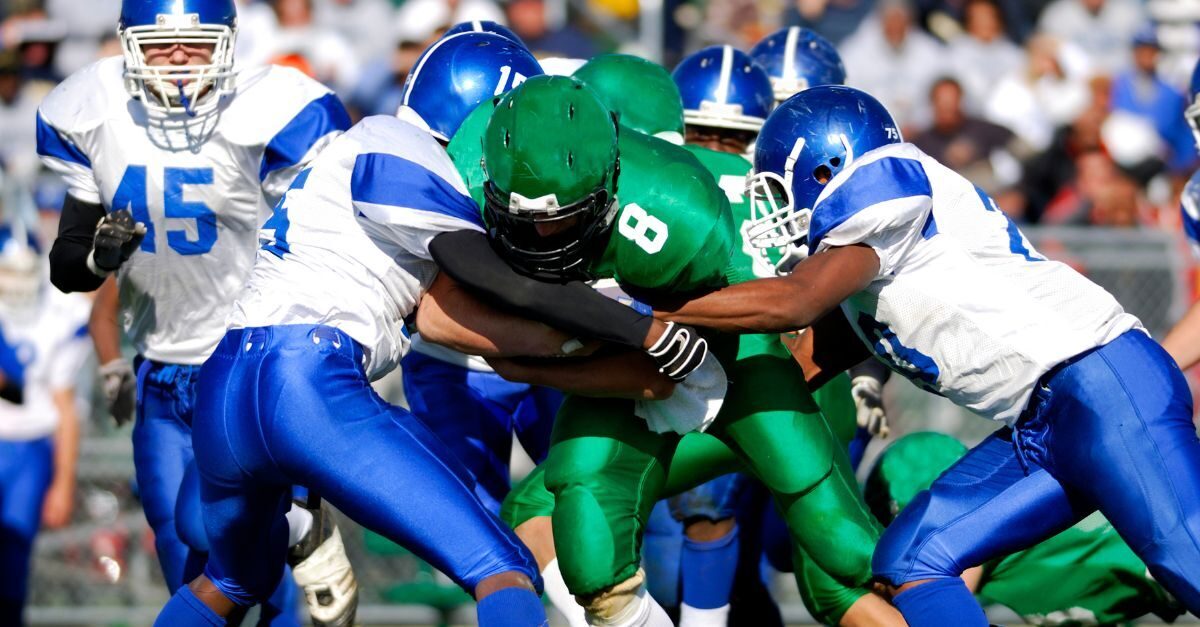
Another valuable concept is tracking Max Speed with Speed Zones. Research suggests that practicing at around 80 – 90% of an athlete’s max speed can yield optimal results in terms of skill acquisition, muscle memory, and injury prevention.
Performance tracking technology enables coaches to monitor whether players are hitting this sweet spot during practice. Coaches can establish their own percentages for each speed zone to help track whether athletes are eclipsing or exceeding specific zones throughout a practice or a game. This data-driven approach ensures that athletes are honing their skills effectively and not overexerting themselves during training sessions.
Coaches have the ability to establish Speed Zones based on position and the entire team with performance benchmarks that provide valuable insights after each practice session or game. The flexibility to adjust Speed Zones throughout the week or the entire season can help minimize overloading athletes leading up to game day, resulting in fresh legs leading up to kickoff.
Optimize Practices Leading Up to Game Day
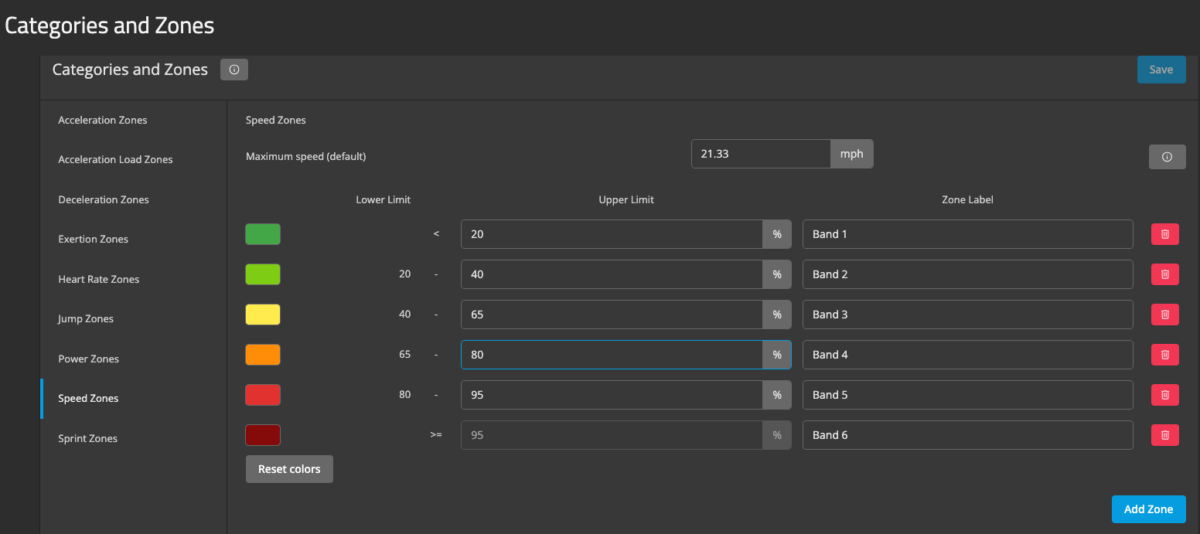
Integrating max speed benchmarks into practice routines is a game-changer — coaches strategically design drills and exercises aimed at helping athletes hit specific max speed targets. Players are better prepared to execute plays at their peak performance on the field by simulating game scenarios and fine-tuning techniques under controlled conditions.
Motivate Your Players With Sports Data

Beyond its analytical advantages, sports performance tracking technology serves as a powerful motivational tool. Athletes can visualize their progress over time, celebrating milestones and witnessing firsthand how their hard work translates into tangible improvements. Moreover, coaches can use this data to motivate players individually, compare performance across different positions, and foster healthy competition within the team.
In the ever-evolving landscape of football, the synergy between performance coaches and cutting-edge technology has ushered in a new era of athleticism. Max Speed benchmarks, powered by performance tracking technology, provide a scientific framework for enhancing speed and agility, critical attributes for success on the gridiron.
As coaches and athletes continue to harness the potential of this approach, we can expect even more exciting advancements in the realm of sports performance. So, the next time you watch a football game, remember that behind every spectacular play is a harmonious blend of human dedication and technological innovation.
If you’re interested in learning more about our GPS-based sports performance tracking technology and player tracking systems from our experts, don’t hesitate to contact us or schedule a meeting. Or download the brochure below.
